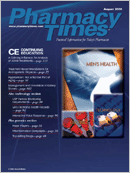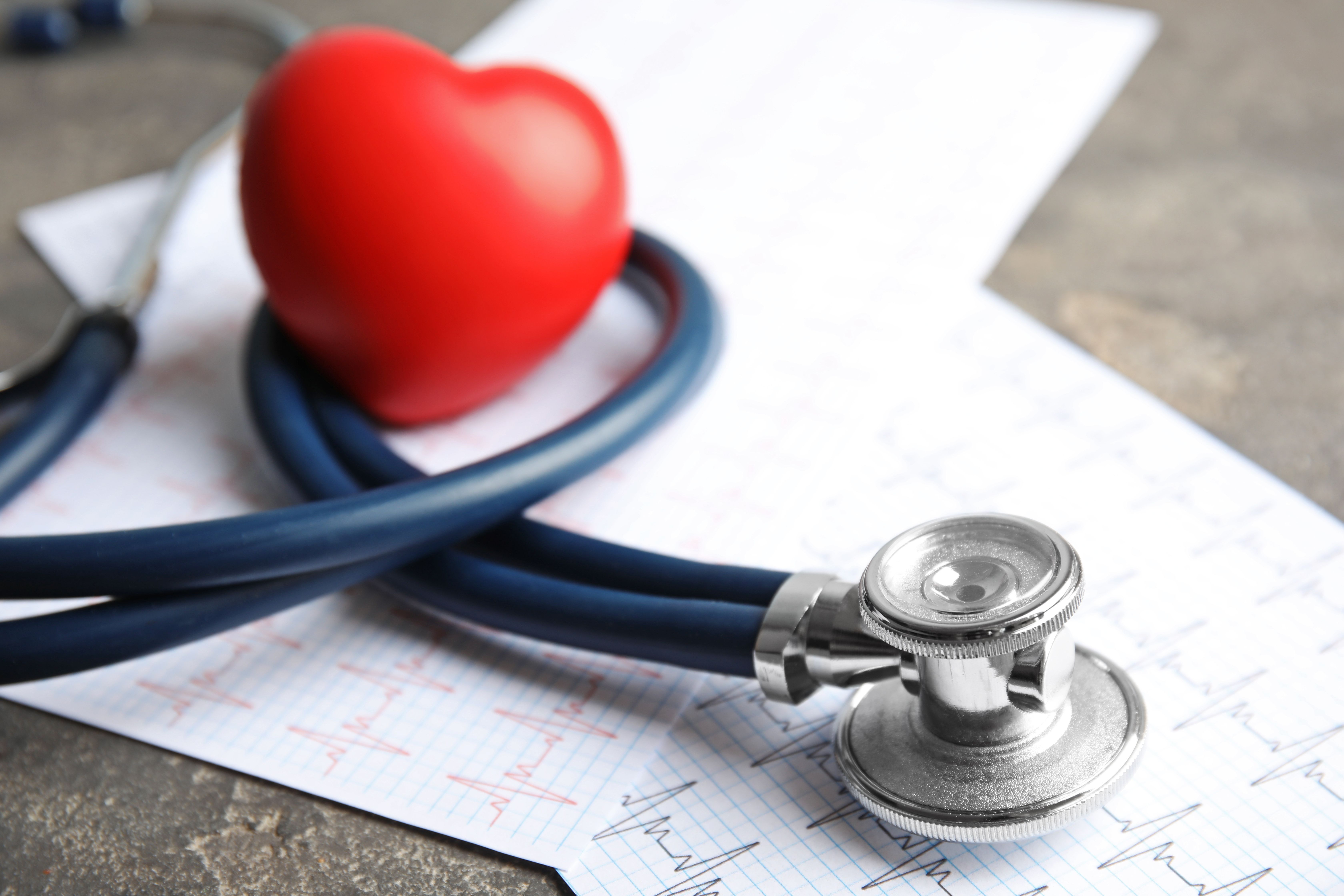Publication
Article
Pharmacy Times
Hypotension: Not a Normal Part of Aging
The impact of hypertension?causing cardiovascular disease, disability, and early mortality?is common knowledge. So too is the importance of diet, exercise, and other lifestyle factors for the prevention of that condition. Scrutiny of hypertension may have distracted attention from the flip side of hypertension, which is hypotension.
Orthostatic hypotension (OH) was first described in 1815 but meant little until a century later when practitioners began recording "tilts": blood pressure (BP) and heart rate taken in increasingly upright positions.1 Physicians anecdotally linked hypotension to low stamina and mental distraction. By the 1940s, clinicians generally thought that hypotension was preferable to hypertension. The definition of hypotension was controversial, however, until 1995, when the American Autonomic Society and the American Academy of Neurology issued clinical criteria.2 Up to 30% of people are hypotensive,3,4 with elders disproportionately affected.5
For some people, hypotension is "normal," but for others it precipitates falls, cardiac compromise, or cerebral hypoperfusion. Recently hypotension has emerged as a clinical indicator for several conditions. OH is associated with cardiovascular disorders independent of other risk factors (smoking, diabetes, and demographics).6,7 Hypertensive individuals often experience hypotension; up to two thirds of elderly subjects diagnosed with hypertension may experience postprandial BP reductions.
The prevalence of OH may be as high as 20% in patients with Parkinson's disease,8 with the prevalence increasing with patient age and the duration and severity of the disease.9 Alzheimer's disease also has been linked to hypotension. Hypotension seems to be a consequence of these degenerative disorders, not vice versa.8,10 Chronic fatigue syndrome11 and fibromyalgia sufferers often have neurally mediated hypotension. Up to 30% of dialysis patients will experience hypotension during dialysis.12
How Low Can One Go?
To identify hypotension, clinicians have patients rest for 15 minutes in the supine position and then read their BP. Patients then stand and stay erect. Readings are taken every minute for 5 minutes. If systolic BP falls by more than 20 mm Hg or if diastolic BP falls by more than 10 mm Hg while the patient is standing or tilting up to 60o with or without dizziness or syncope, hypotension is present.8 Symptoms such as visual dimming or blurring, neck pain, cognitive slowing, seizures, and/or chest pain indicate cerebral hypoperfusion or retinal ischemia.8,13
Hypotension may predict mortality.14,15 Its prognostic value for death among patients with diabetes or dementia or in the frail elderly has been studied.10,16,17 Overall, data associate hypotension with age-adjusted mortality rates, confirming its significance as a clinical indicator, especially in the frail elderly.12
Subtypes of Hypotension
Hypotension is not a definitive diagnosis but rather a symptom of deregulation. Orthostatic hypotension develops when systems fail to compensate for the ~500- mL decrease in blood routed to the heart as a person stands and blood pools in the extremities.16 Hypovolemia induced by excessive diuretic use is the most common cause of OH.18 Extrinsic factors associated with OH include age-related physiologic changes, medication, immobility, autonomic insufficiency, and volume depletion. Conditions associated with OH include hypertension, Parkinson's disease, stroke, transient ischemic attacks, history of myocardial infarction, and electrocardiographic abnormalities.16
Drug-induced OH represents up to 50% of all OH. It usually is due to agents that impair autonomic reflex mechanisms and reduce BP.18 Agents implicated include diuretics, antihypertensives, monoamine oxidase inhibitors, tricyclic antidepressants, antianginals, levadopa, dopamine, and selegiline.8,13,18 Barbiturates and alcohol also may induce OH. Vincristine-induced neurotoxicity can cause OH as well.18
Postprandial hypotension (PPH), observed only in elders,19 is distinct from OH,12 although patients can have both concurrently.8 Up to 50% of older patients with unexplained syncope have PPH.20 Among community-dwelling adults, 2.6% have PPH; in the frail elderly, its prevalence rises to 36%.14
A large meal decreases BP in up to 60% of older patients, even when they are resting quietly.8,13 Patients at risk for PPH are those with autonomic dysfunction, diabetes, Parkinson's disease, Alzheimer's disease, systemic hypertension, and renal failure.1,21 PPH also is closely associated with autonomic neuropathy. The precipitous BP drop in PPH leads to syncope, falls, dizziness, fatigue, angina pectoris, stroke, and myocardial infarction.11 PPH is most likely to occur after breakfast, when BP is naturally the lowest.1,21 Warm meals generate a more marked hypotensive reaction.1 Mild-to-moderate exercise after meals temporarily increases BP, but BP falls once the exercise ends.22
Treatment
Both nonpharmacologic (Table1,8,13,23,24) and drug interventions may be necessary to achieve not necessarily a specific BP number, but adequate functional capacity.13 Drugs for hypotension, however, often complicate supine hypertension.8
Caffeine (a phosphodiesterase inhibitor) increases BP, and some clinicians suggest 2 cups of morning coffee, but this suggestion is controversial.1,8,21 Caffeinated beverages should be consumed before meals rather than with meals.8 A trial may be harmless, because caffeine is low in cost and readily available.1
Fludrocortisone has been used in doses of 0.1 to 0.4 mg daily for at least 2 weeks.8 It stimulates renal sodium retention,13 and sodium supplementation may be needed. Common side effects include weight gain of up to 8 pounds, hypokalemia, hypomagnesemia, and supine hypertension. Fludrocortisone interacts with warfarin, so the use of concurrent warfarin must be monitored.13
To increase peripheral resistance and prevent venous pooling in neurogenic and dialysis-related hypotension, midodrine, a selective a-adrenoreceptor agonist, has been used. Clinicians prescribe 2.5 mg with breakfast and lunch and increase the dose 2.5 mg tid every 2 days to a maximum of 30 mg daily.13 Midodrine elevates standing systolic BP by 15 to 30 mm Hg within 1 hour for up to 3 hours. Doses should be administered during the day while the patient is active. Adverse effects include pilomotor reactions, paresthesia, pruritis (especially on the scalp), dysuria (hesitancy and retention), and chills. To avoid supine hypertension, the last dose of the day is never scheduled later than 6 PM or 4 hours before bedtime.8,12,13 Midodrine interacts with digoxin, calcium channel blockers, and ?-blockers, and it is contraindicated with a-adrenergic receptor stimulators. It may antagonize the a-adrenergic blockers such as doxazocin.12
Low erythropoietin levels and total erythrocyte volume are notorious contributors to hypotension, particularly OH. Although unapproved for this indication, erythropoietin increases red blood cell volume and sometimes corrects OH.8 Erythropoietin administration always must be accompanied by iron supplementation to prevent iron deficiency anemia.13
Octreotide, a somatostatin analogue, decreases splanchnic blood flow and increases BP.1,8 In PPH, initial doses of 50 ?subcutaneously are used 30 minutes before meals for 2 weeks. If response occurs, a monthly depot injection can be used.1 Octreotide can alter dietary fat absorption and depress vitamin B12 levels.
Final Thought
BP normally rises gradually as the day progresses, but it varies widely among and within people. Hypotension should not be summarily dismissed as a part of normal aging. Like its cousin, hypertension, hypotension is a symptom and a clinical precursor to other disorders.
Dr. Zanni is a health-systems consultant and a psychologist based in Alexandria,Va. Ms. Wick is a senior clinical research pharmacist at the National Cancer Institute, National Institutes of Health. The views expressed are those of the authors and not those of any government agency.
For a list of references, send a stamped, self-addressed envelope to: References Department, Attn. A. Rybovic, Pharmacy Times, Ascend Media Healthcare, 103 College Road East, Princeton, NJ 08540; or send an email request to: arybovic@ascendmedia.com







